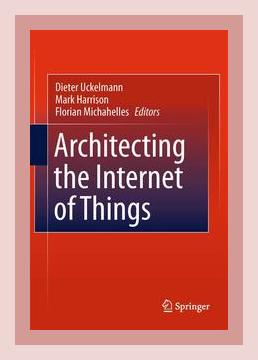Technology and Digital TransformationInternet of Things (IoT)
Title: Architecting the Internet of Things
Authors: Dieter Uckelmann, Mark Harrison, Florian Michahelles
Published: 2011
Category: Internet of Things (IoT)
Introduction
“Architecting the Internet of Things” by Dieter Uckelmann, Mark Harrison, and Florian Michahelles offers an insightful examination into the design, implementation, and future trajectory of IoT systems. The book delves into the technical, social, and economic features of IoT, providing a comprehensive framework for understanding how interconnected devices and systems redefine our interactions with technology. Below is a comprehensive summary of the core points from the book, including practical actions readers can take.
1. Foundations of IoT
Key Points
- IoT Definition:
IoT refers to the network of physical objects embedded with sensors, software, and other technologies to connect and exchange data with other devices and systems over the internet. - Enabling Technologies:
Key enabling technologies include RFID, wireless sensor networks (WSNs), middleware, cloud computing, and data analytics.
Action:
- Establish Knowledge Base:
Begin by familiarizing yourself with the fundamental technologies driving IoT such as WSNs, RFID, and cloud services. Pursue online courses or certification programs focusing on these areas.
2. IoT Architecture
Key Points
- Three-Layer Architecture:
IoT architecture typically includes three layers: perception (sensors), network (connectivity), and application (data processing and interaction). - Middleware:
Middleware in IoT acts as a bridge between the hardware and applications, providing necessary abstraction and services.
Action:
- Design Prototypes:
Create a small IoT prototype, focusing on integrating sensors (perception layer), selecting an appropriate communication method (network layer), and developing a basic application to analyze the data (application layer).
3. IoT Communication Protocols
Key Points
- Standard Protocols:
Protocols such as MQTT, CoAP, and HTTP are crucial for IoT communication. - Interoperability:
Ensuring devices from different manufacturers can communicate seamlessly is vital.
Action:
- Implement Protocols:
Experiment with different communication protocols by developing simple projects that send sensor data to a server using MQTT and CoAP.
4. Security and Privacy
Key Points
- Security Challenges:
IoT devices are often constrained in resources, making them vulnerable to attacks. - Privacy Concerns:
Data generated by IoT devices can be sensitive and personal, raising privacy issues.
Action:
- Strengthen Security:
Implement security measures such as encryption, authentication, and regular firmware updates in your IoT projects to safeguard against potential threats. - Data Privacy Policy:
Develop a clear data privacy policy outlining how data collected by your IoT devices will be used and protected.
5. IoT Data Handling and Analytics
Key Points
- Big Data:
IoT generates massive volumes of data that need real-time processing and analysis. - Edge and Cloud Computing:
Edge computing processes data close to the source, whereas cloud computing handles more extensive data analysis and storage.
Action:
- Leverage Data Analytics:
Use tools like Apache Kafka for real-time data streaming and Apache Hadoop for large-scale data processing in your IoT solutions.
6. Application Domains of IoT
Key Points
- Smart Homes:
IoT enables automation and control of home devices for energy management, security, and convenience. - Smart Cities:
IoT applications in smart cities include traffic management, waste management, and environmental monitoring. - Healthcare:
IoT in healthcare focuses on monitoring patient vitals, managing chronic diseases, and supporting elderly care.
Action:
- Explore Specific Applications:
Select an industry of interest, such as home automation, and develop a specific IoT solution like a smart thermostat or a home security system to understand the practical applications of IoT in that domain.
7. Socio-Economic Impact of IoT
Key Points
- Economic Benefits:
IoT can substantially reduce costs and increase efficiency in various industries. - Social Impact:
While IoT brings convenience, it also raises concerns about job displacement and digital privacy.
Action:
- Mitigate Negative Impact:
In your role, advocate for responsible and ethical IoT development practices. Consider the societal implications of your IoT projects and strive to create solutions that enhance quality of life without infringing on privacy or leading to job loss.
8. Future Trends and Challenges
Key Points
- Scalability:
As IoT networks grow, scalability becomes a major challenge. - Regulatory Issues:
Governments are working on policies and regulations to address IoT security and privacy concerns.
Action:
- Plan for Scalability:
Design your IoT systems with scalability in mind, ensuring that your architecture can handle increased loads and devices. - Stay Updated on Regulation:
Keep abreast of new regulations and standards in IoT to ensure compliance and adopt best practices in your developments.
Conclusion
“Architecting the Internet of Things” provides a comprehensive overview of the principles and practices necessary to design, implement, and manage IoT systems effectively. By understanding and applying the methodologies and insights from the book, individuals and organizations can harness the power of IoT, ensuring secure, scalable, and efficient solutions across various sectors. The practical actions included in this summary serve as a guide to implementing the book’s advice in real-world scenarios, ensuring a thorough grasp of IoT’s potential and challenges.
This structured summary covers a variety of points and suggestions from the book while emphasizing practical implementations. By following these actions, readers will be better equipped to navigate the complex landscape of IoT.
Technology and Digital TransformationInternet of Things (IoT)
